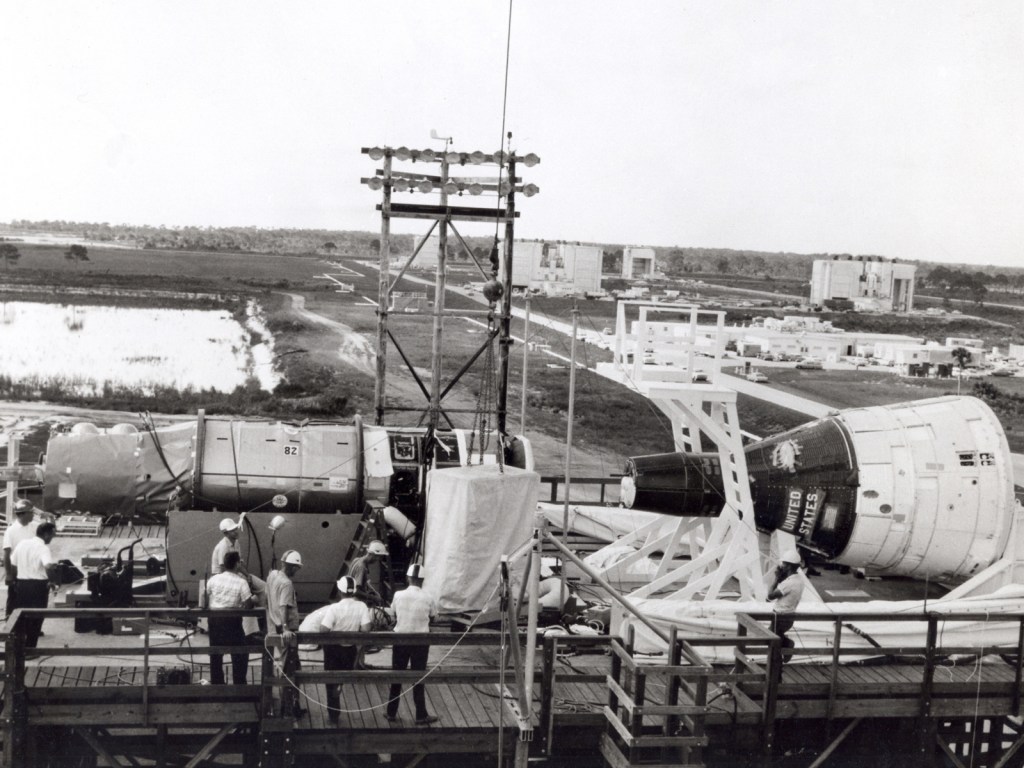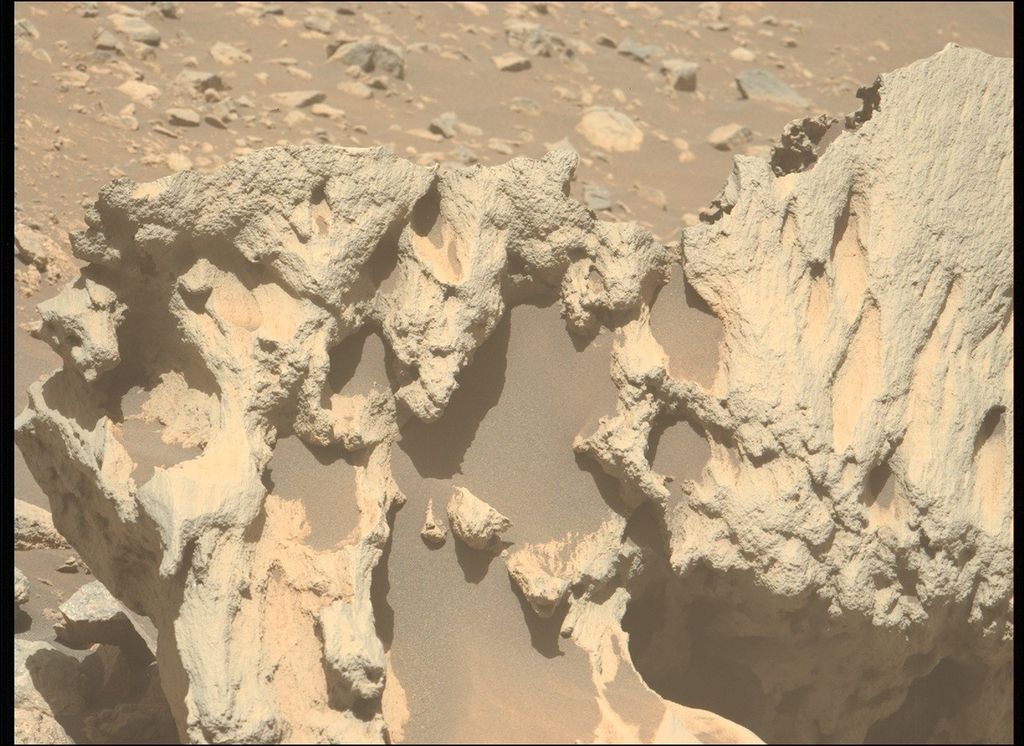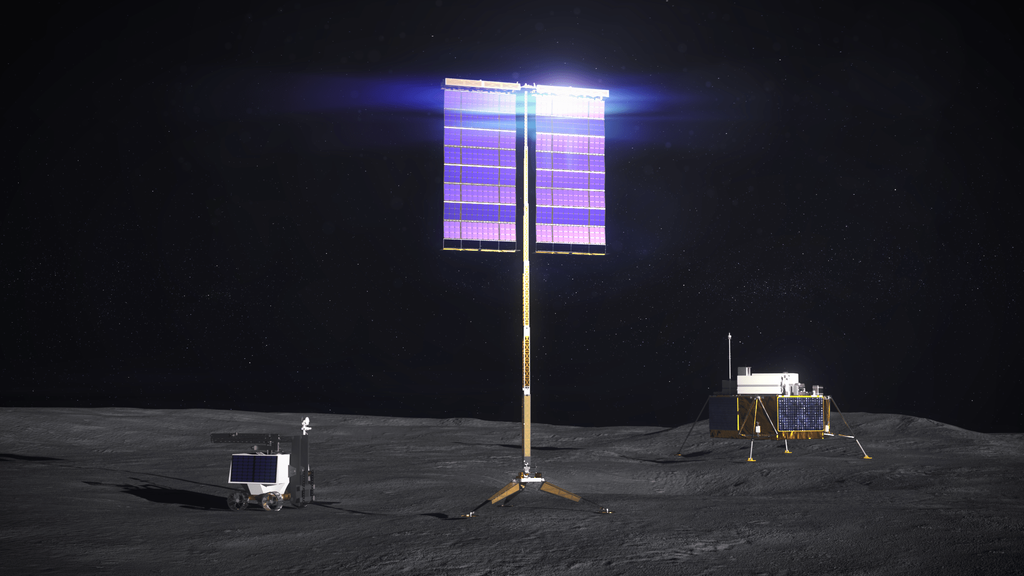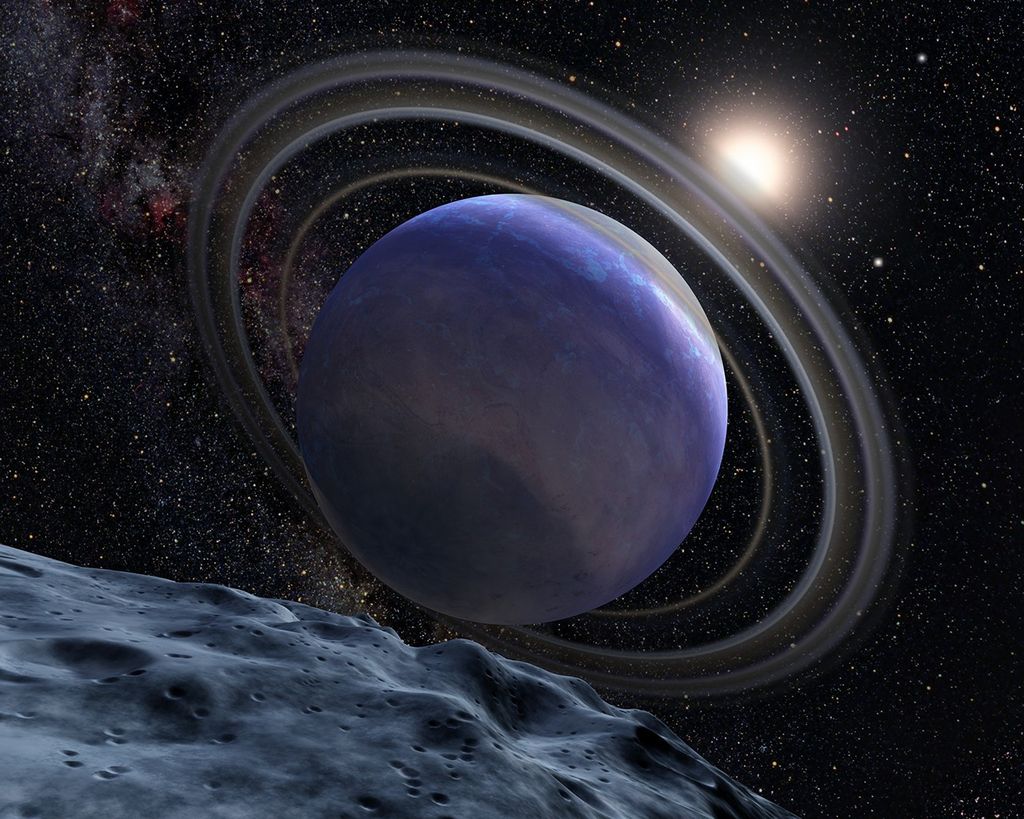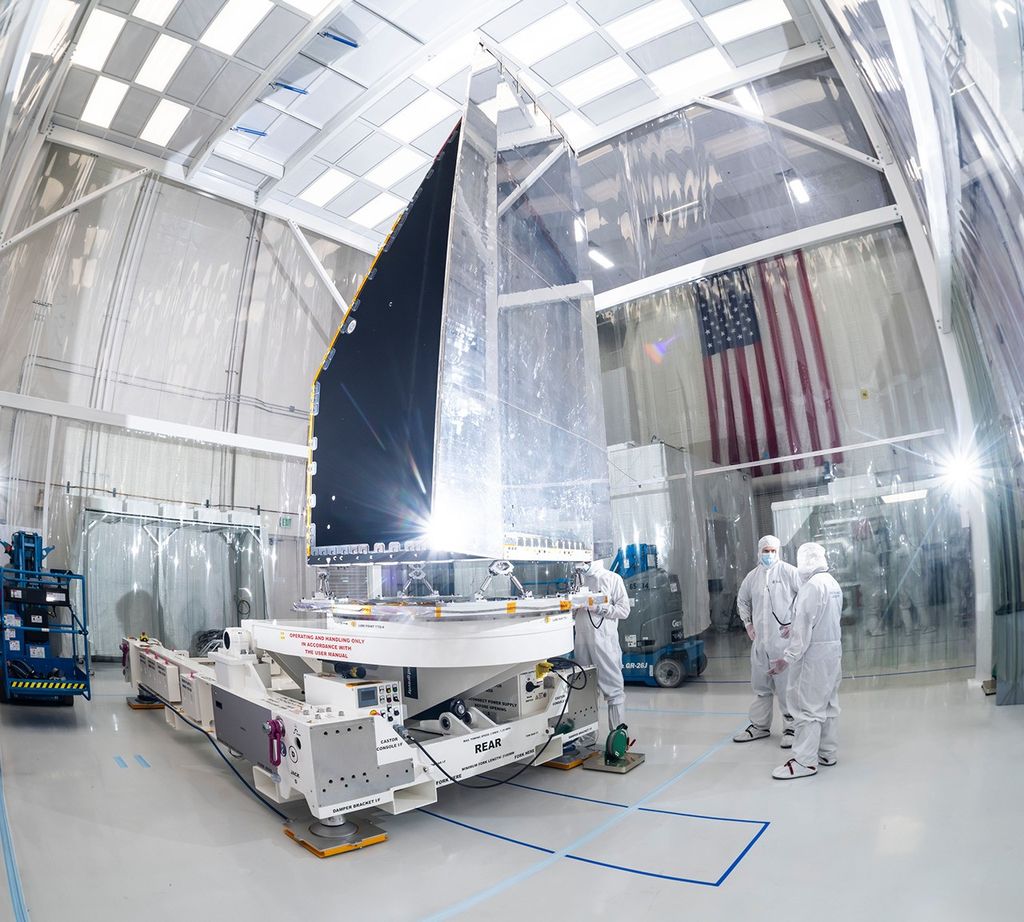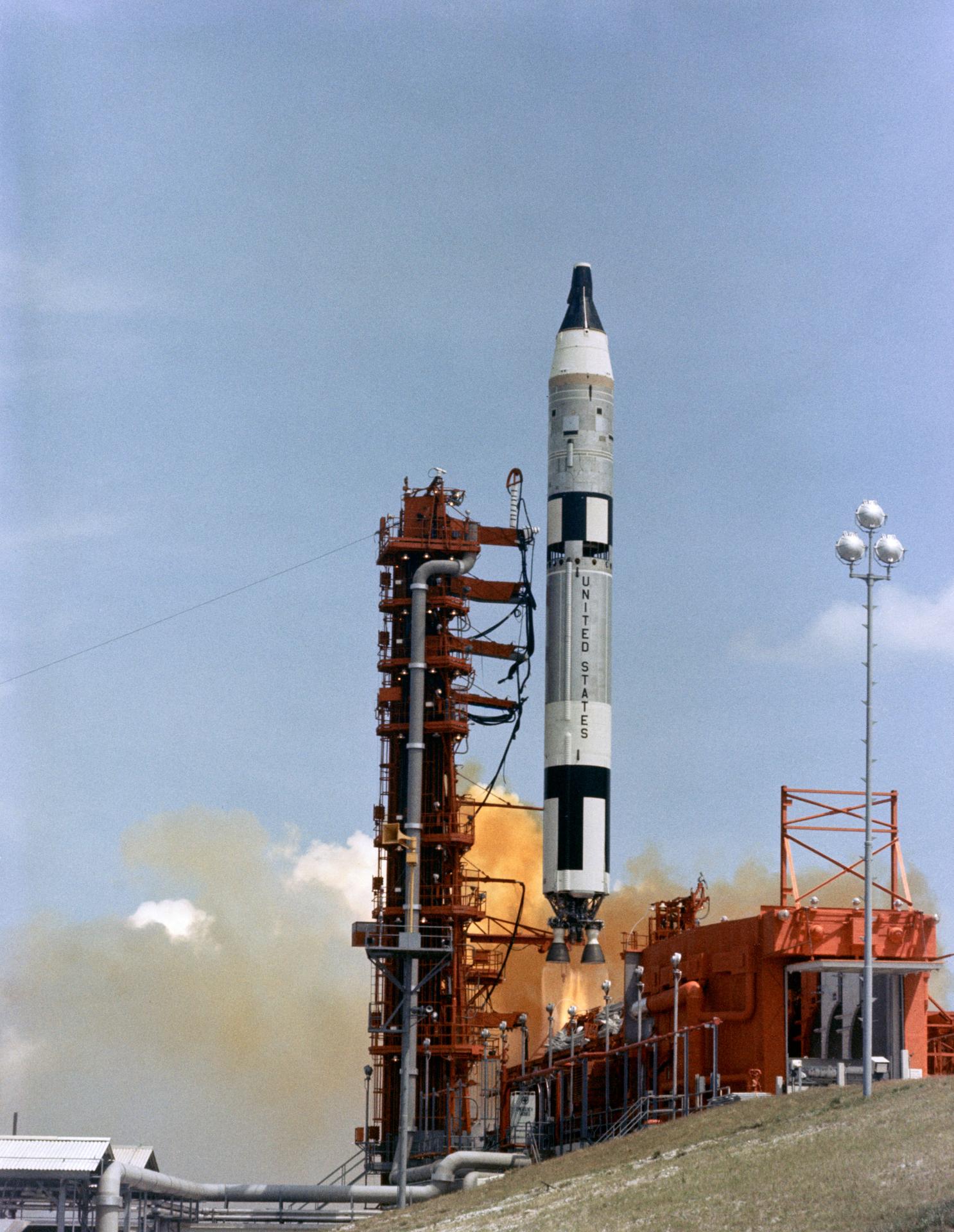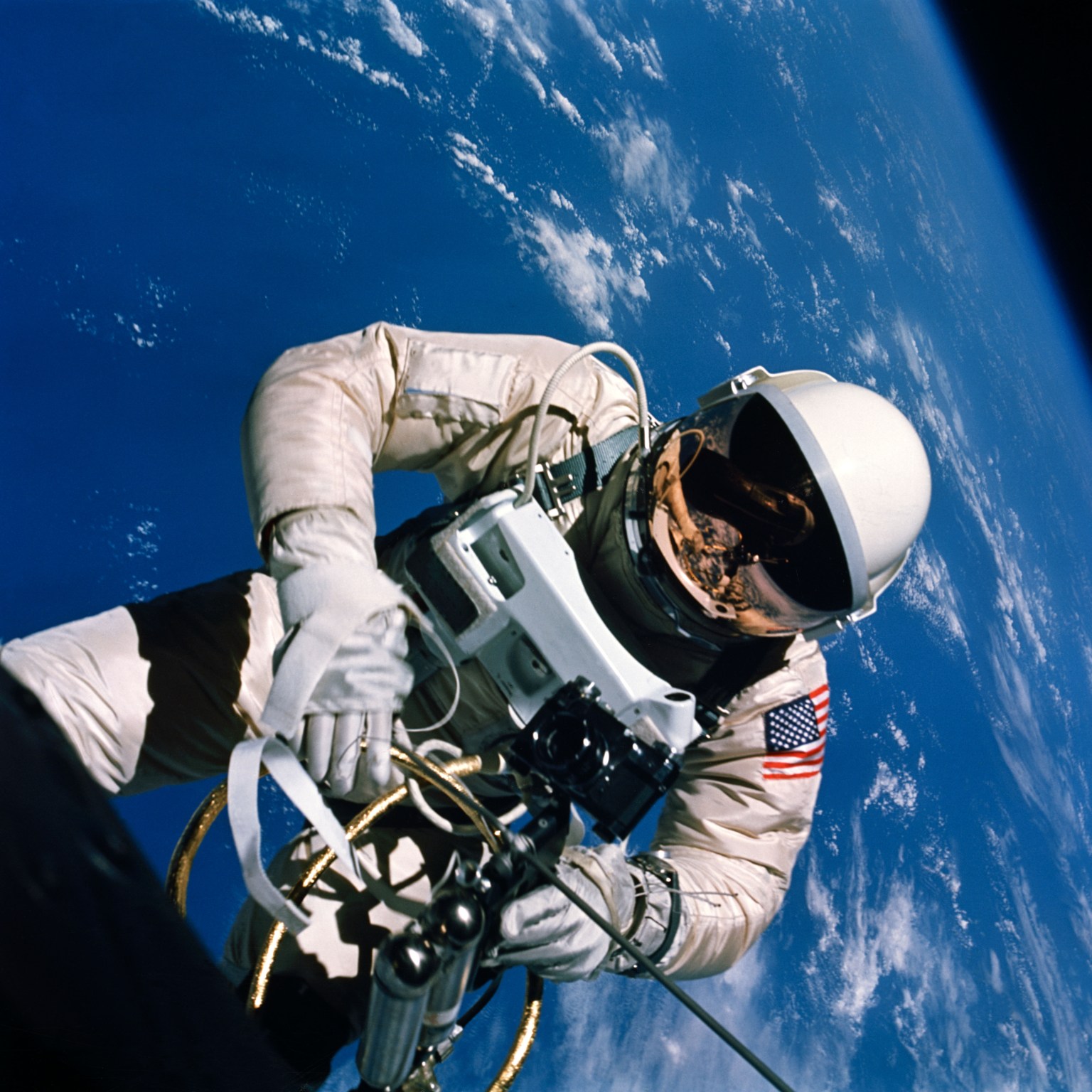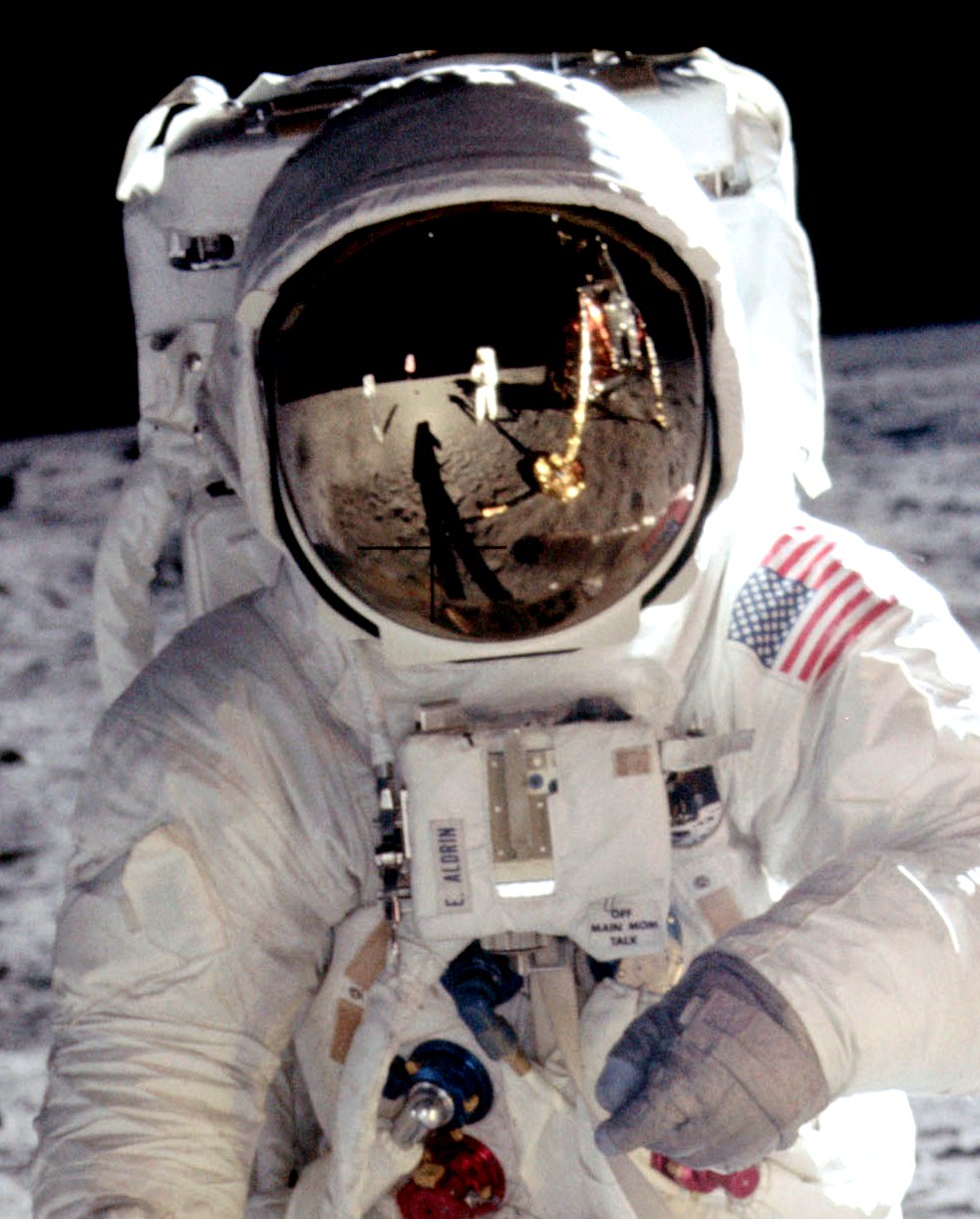
Gemini I
The first mission of NASA’s Gemini program, Gemini I was an uncrewed test flight that took place on Apr. 8, 1964.
Mission Type
mission duration
Launch
Landing
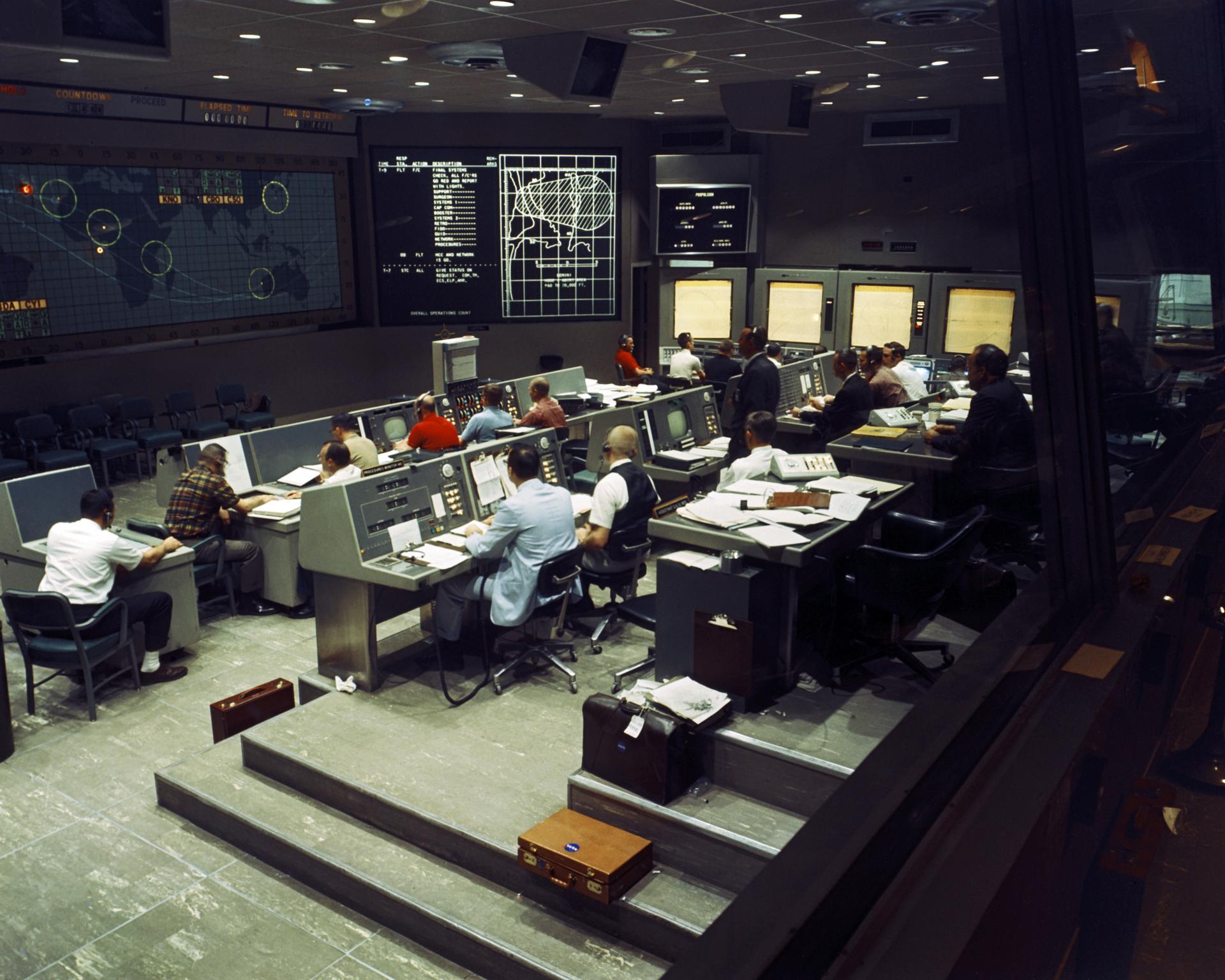
Mission Objective
Gemini I was an uncrewed orbital test of the Titan 2 launch vehicle, the Gemini spacecraft structural integrity, and the launch vehicle-spacecraft compatibility. The test covered all phases through the orbital insertion phase. Other objectives were to check out launch vehicle-spacecraft launch heating conditions, launch vehicle performance, launch vehicle flight control system switch-over circuits, launch vehicle orbit insertion accuracy, and the malfunction detection system. This was the first production Gemini spacecraft and launch vehicle.
Mission Facts
Payload: Gemini 1
Mass at launch: 5,170 kg
Launch Date: Apr. 8, 1964, 11:00:01 a.m. EST (16:00:01 UT)
Launch Site: Complex 19, Cape Canaveral, United States
Launch Vehicle: Titan II
Revolutions Completed: 3
Duration: 4 hours, 50 minutes
Reentry: Apr. 12, 1964
Mission Overview
Launch of Gemini I took place on Apr. 8, 1964, at 11:00:01 a.m. EST (16:00:01 UT) from Complex 19. Six minutes after launch, the Titan II booster placed the Gemini spacecraft and the attached second stage in a 160.5 x 320.6 km orbit with a period of 89.3 minutes. An excess speed of 22.5 km/hour sent the spacecraft 33.6 km higher than planned. Mission plans did not include separation of spacecraft from the 3.05-meter diameter, 5.8-meter-long Titan stage 2, both orbited as a unit. The planned mission included only three orbits and ended about 4 hours 50 minutes after launch with the third pass over Cape Kennedy. The spacecraft was tracked until it reentered the atmosphere and disintegrated on the 64th orbital pass over the southern Atlantic on Apr. 12. The systems functioned well within planned tolerances and the mission was deemed a successful test.
Project Gemini: Apollo’s Training Ground
On May 5, 1961, Alan Shepard’s Mercury flight was inked in history books. Twenty days later, President John F. Kennedy…
Read the Story